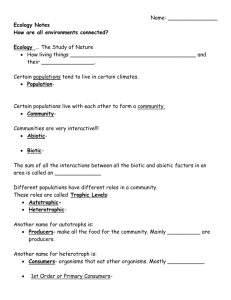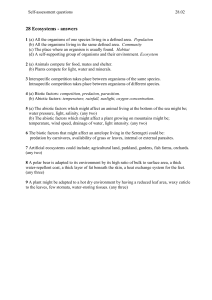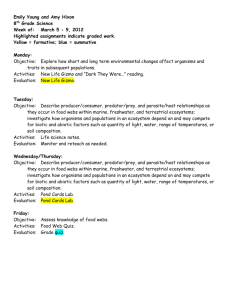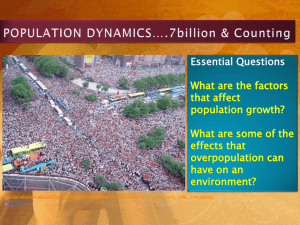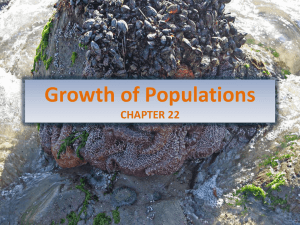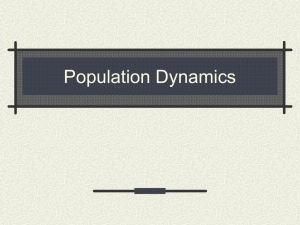Populations and communities Transcript
advertisement
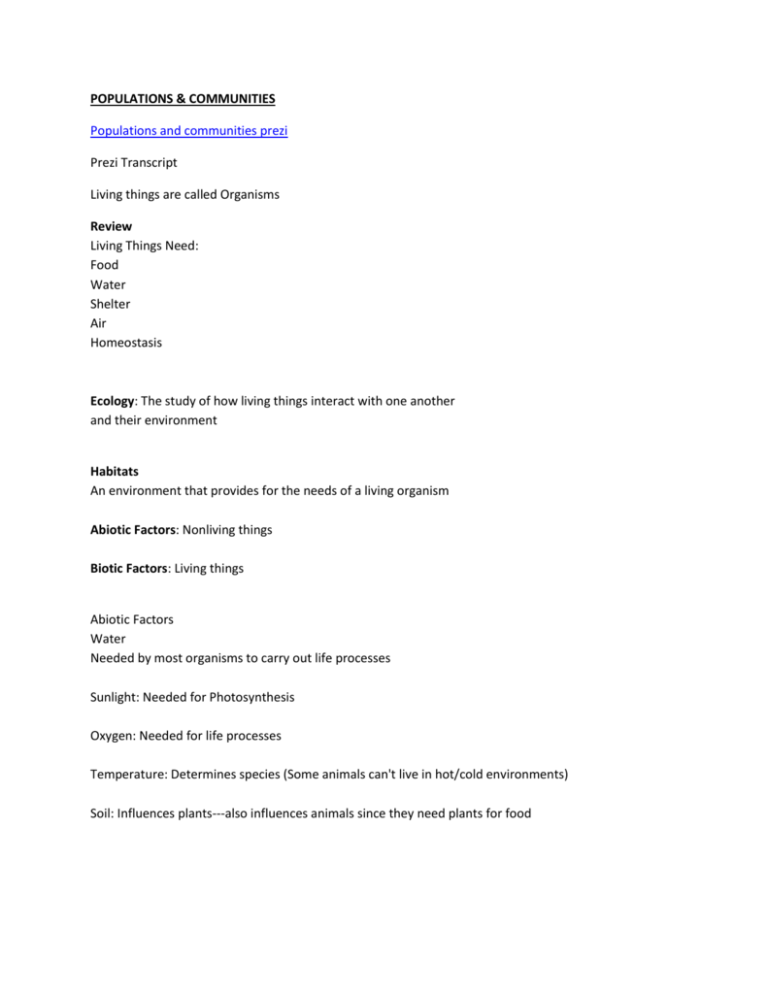
POPULATIONS & COMMUNITIES Populations and communities prezi Prezi Transcript Living things are called Organisms Review Living Things Need: Food Water Shelter Air Homeostasis Ecology: The study of how living things interact with one another and their environment Habitats An environment that provides for the needs of a living organism Abiotic Factors: Nonliving things Biotic Factors: Living things Abiotic Factors Water Needed by most organisms to carry out life processes Sunlight: Needed for Photosynthesis Oxygen: Needed for life processes Temperature: Determines species (Some animals can't live in hot/cold environments) Soil: Influences plants---also influences animals since they need plants for food Organization Organism: One single thing Population: All members of a species in a given area Species: A group of organisms that are physically similar and can mate to produce offspring Community: A combination of populations in an area Ecosystem: Community plus abiotic factors in an area Determining Size Of Population Direct Observation: Count what you see Indirect Observation: Look at signs but you don't see the animal Sampling: Estimating (Getting an approximate number) based on assumption Ex. I see 10 deer on 1 acre..I assume there will be 100 deer in the 10 acres Mark and recapture studies: Capture and tag the species. They use this to estimate reproduction rate New animals will not be tagged Changes in Population Birth/Death Rates Birth Rate: How many animals are born into the population Death Rate: How many animals die and leave the population If birth rate is larger than death rate: Population increases If birth rate is smaller than death rate: Population decreases Immigration/Emigration Immigration: Animals coming into a population Emigration: Animals leaving a population--moving out Population Density Remember: Density is the amount of matter in a space...SOOOOO. Population Densityis the number of organisms in a space. Formula: # Individuals/Unit of area Density-Dependant factors: Competition, disease & Predation that only become limited when the population gets to a certain size. Usually only affect large, dense populations Density-Independent factors: Affect all individuals regardless of size or density Unusual weather, natural disasters, seasons, human affects on the environment Limiting Factors A factor that causes the population to decrease Carrying Capacity: The largest population an area can support. (How much it can carry) Food & Water : If either is in low supply, organisms will emigrate to find supplies elsewhere Space : If organisms don’t have the basic shelter and space needed for survival, they may be killed or may move to find the space they need. Weathe r: Unusual temperature changes, storms, or floods can change available living space and kill animals in an area. These events can drastically change the biotic factors in an area.

